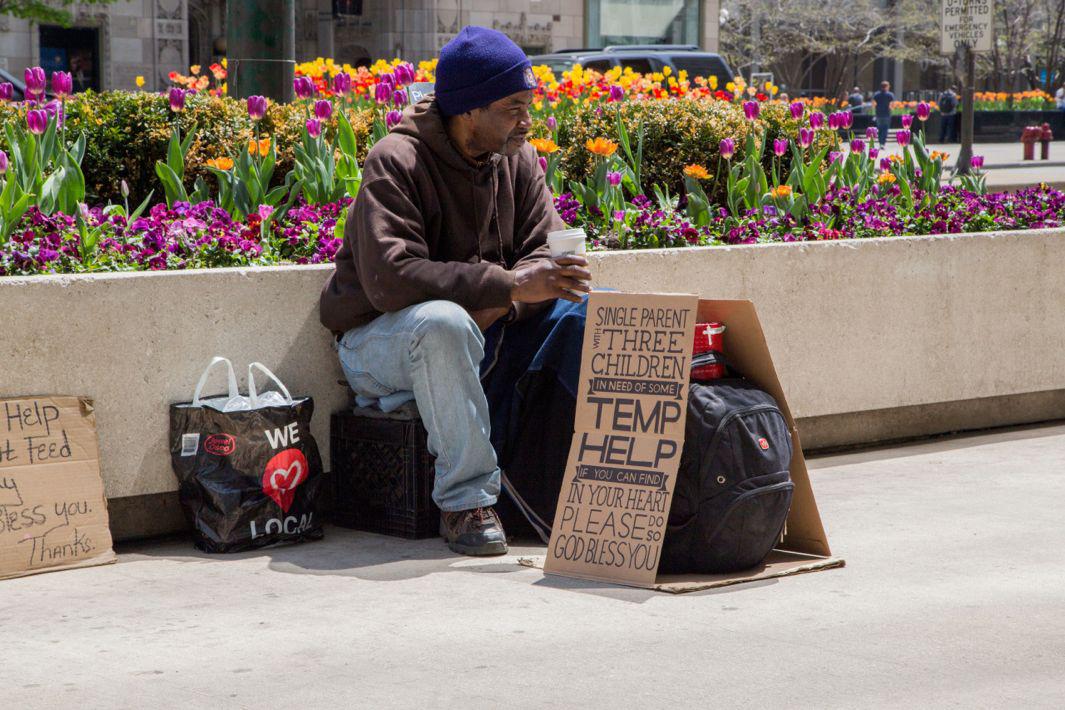Last summer, Ian Todd moved to Chicago to study design at the Chicago Portfolio School. It was his first time living in a major city, and he was struck by the abundance of people asking for help on hand-scrawled cardboard signs and how few passers-by interacted with them.
One day, while walking home from a class in which he was studying hand-lettering, Todd wondered if a better-designed sign might help get the panhandlers’ messages across more effectively or at least act as ice-breakers. “It seemed like a great way to use my skill set to try and help others,” Todd, 23, told me in an email.
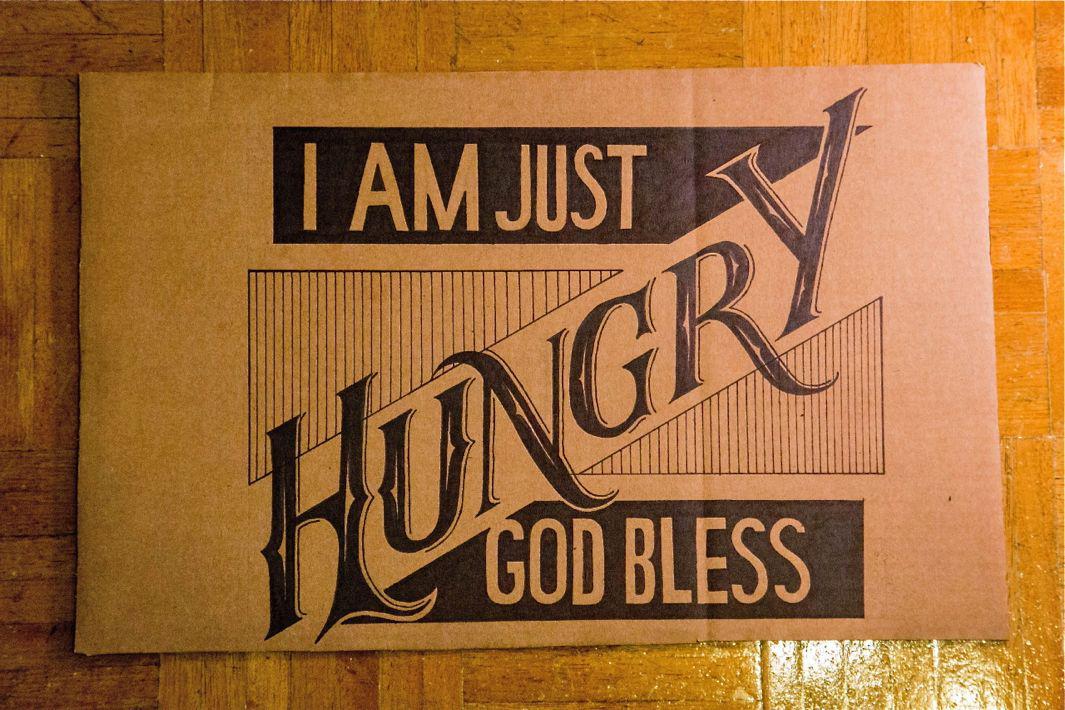
Courtesy of Ian Todd
He approached several people and offered to redesign their signs, producing more stylized versions of the originals with upgraded lettering and layouts.
Todd says he deliberately chose not to edit or interfere with each sign’s wording. “Each sign tells a story,” Todd said. “It’s the message that they would like to share with the world. … I just wanted to help them reach more people. I felt that if I changed the message in any way it would take away from what the sign says about them.”

Courtesy of Ian Todd
Todd said he spent five to 10 hours on each sign, making rough sketches and experimenting with layouts and type styles to best pace the text and make each sign as distinct as possible. Once he settled on a design, he would sketch it out in pencil on cardboard and fill it in with a Sharpie.

Courtesy of Ian Todd
Calculating whether this earnest student project made a tangible difference in the lives of Chicago’s panhandlers is nearly impossible, but Todd checked in with people after about a week to collect anecdotal evidence about the signs’ effects, which he hoped would engender curiosity and act as a conversation-starter. “I feel that help can come in many forms, not just in the form of a donation … so I never directly asked them about money,” Todd said. He asked them if the signs made a difference and let them interpret the question in their own ways. “Most of the time they would tell me about the interactions they had with people.”

Courtesy of Ian Todd
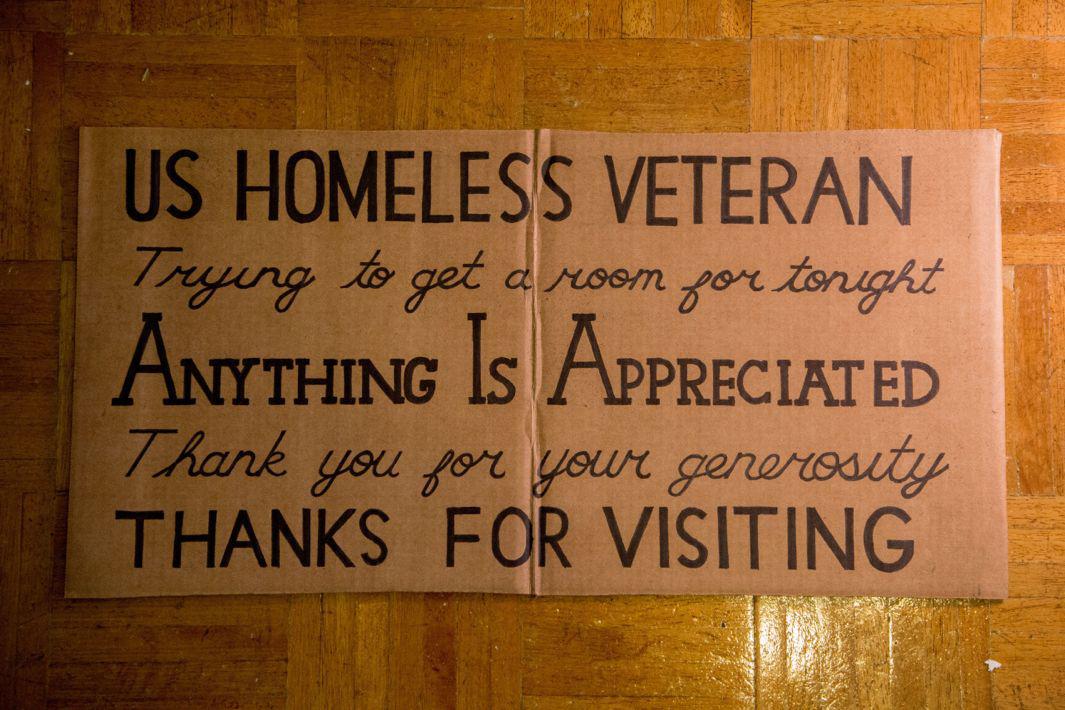
Courtesy of Ian Todd

Courtesy of Ian Todd
Many of the panhandlers told Todd that the signs sparked compliments from passers-by, who would ask if they had made the signs themselves. Fred (pictured above) told Todd that the new sign worked “50 percent better” than the old one and noted that he received between one and four compliments on Todd’s sign per day, all accompanied by donations.
Todd, who has since moved to Los Angeles and discontinued the project, said that he “never received any negative feedback” about the roughly 17 signs he made over a four-month period. But the experience helped him shift his outlook: “I think that good design grabs people’s attention which can make a big difference when there are so many different messages being thrown at you at once.”
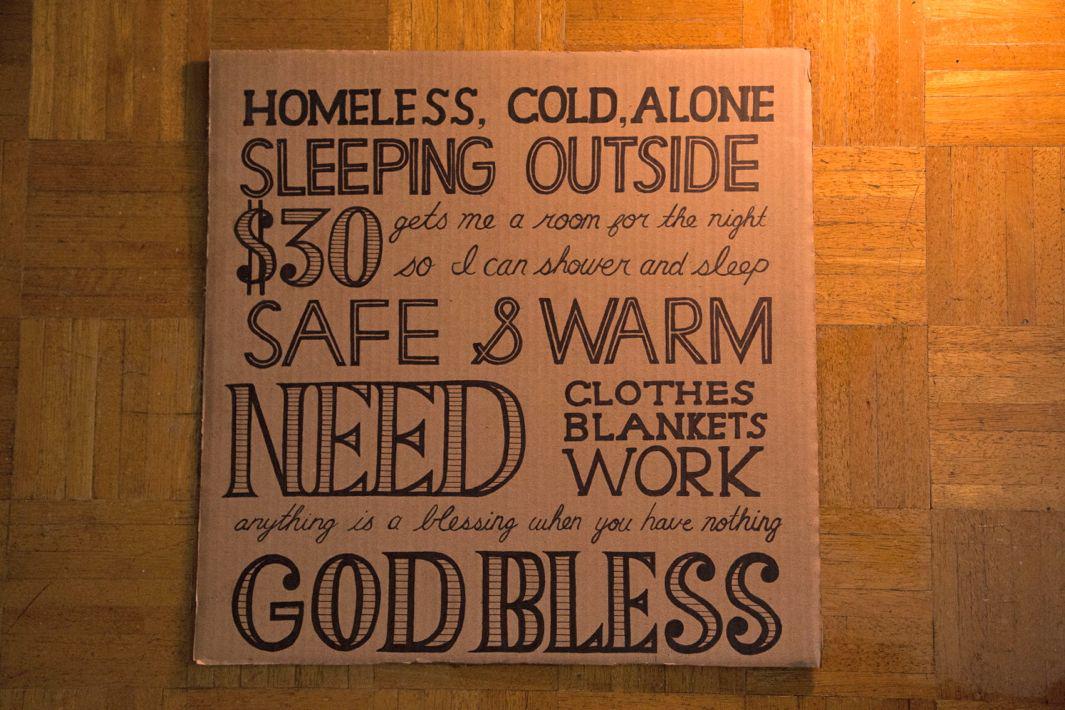
Courtesy of Ian Todd
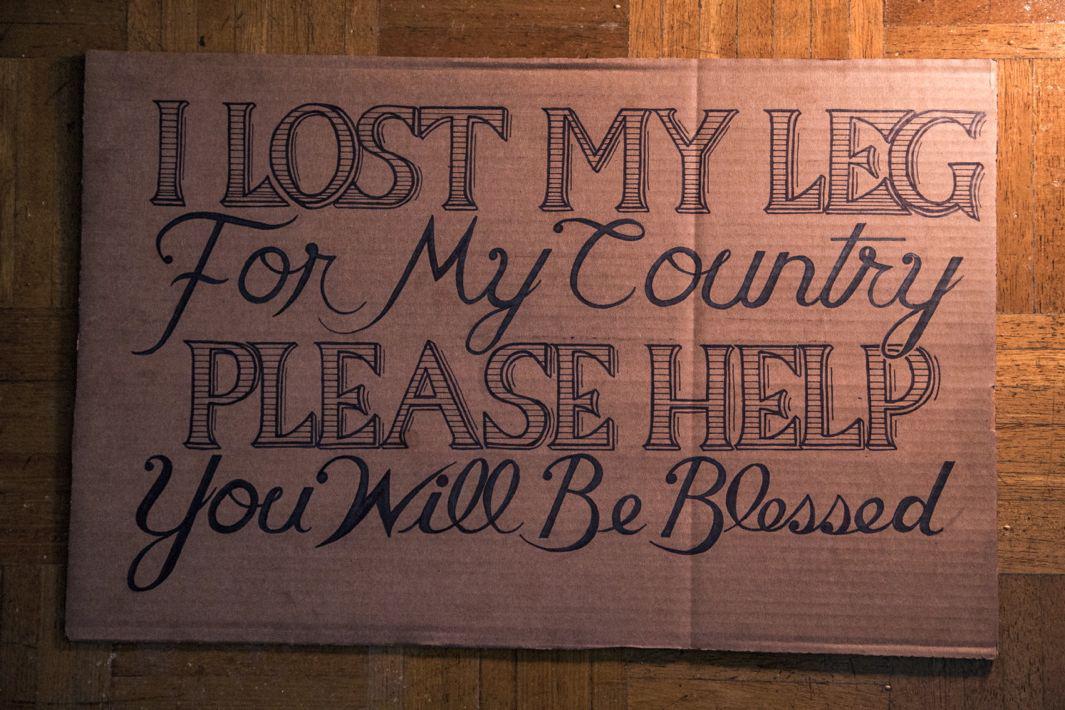
Courtesy of Ian Todd
Although I find Todd’s results unsatisfying, I am intrigued by the experiment’s larger question: What would happen if an established designer or design firm helped panhandlers brand their messages the way they help corporations win the hearts and minds (or, at least, wallets) of an indifferent public? The hand-lettering style of Todd’s signs, accompanied by the “God bless you”–heavy tone of much of the text, might give them a twee sensibility at first glance. But the use of hand-lettering is a widespread digital-era trend, so I can see why a young design student might employ this approach.
Whether or not you like the style of Todd’s signs, it’s clear that they were designed to humanize their owners with a friendlier, more approachable look. A cynic might say that Todd’s redesigned signs are an insensitive parody of the real thing, a superficial effort to cure a deep social problem. But Todd’s short-lived and thought-provoking project raises an important question about what something as minor as a design tweak might do to help the less fortunate among us.
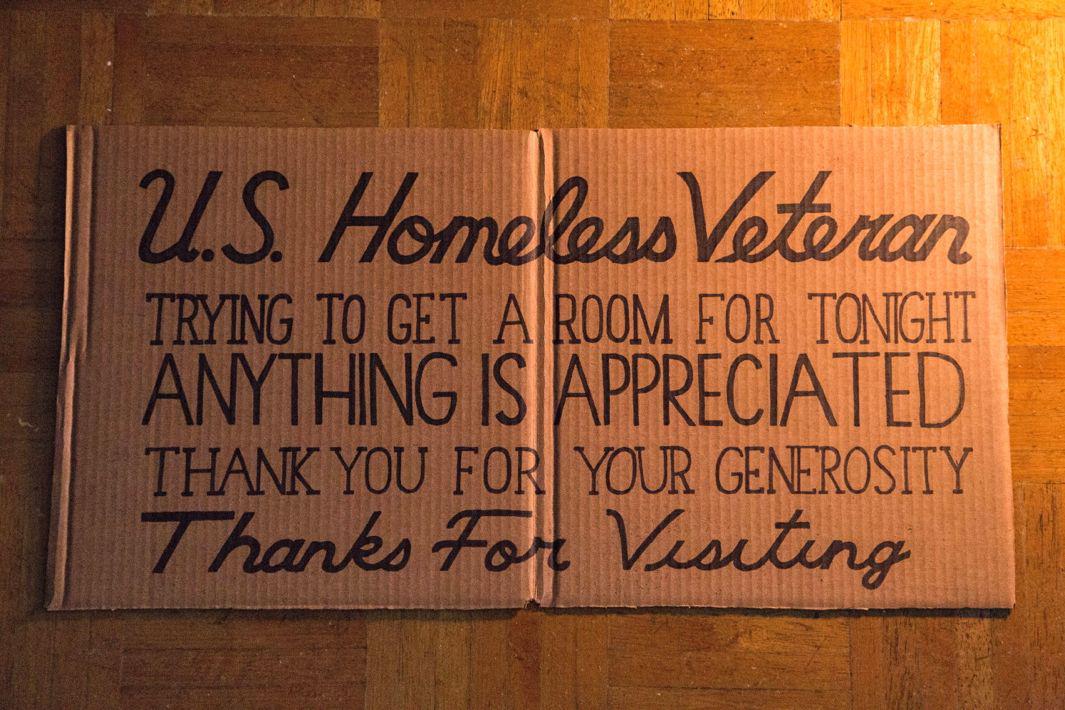
Courtesy of Ian Todd
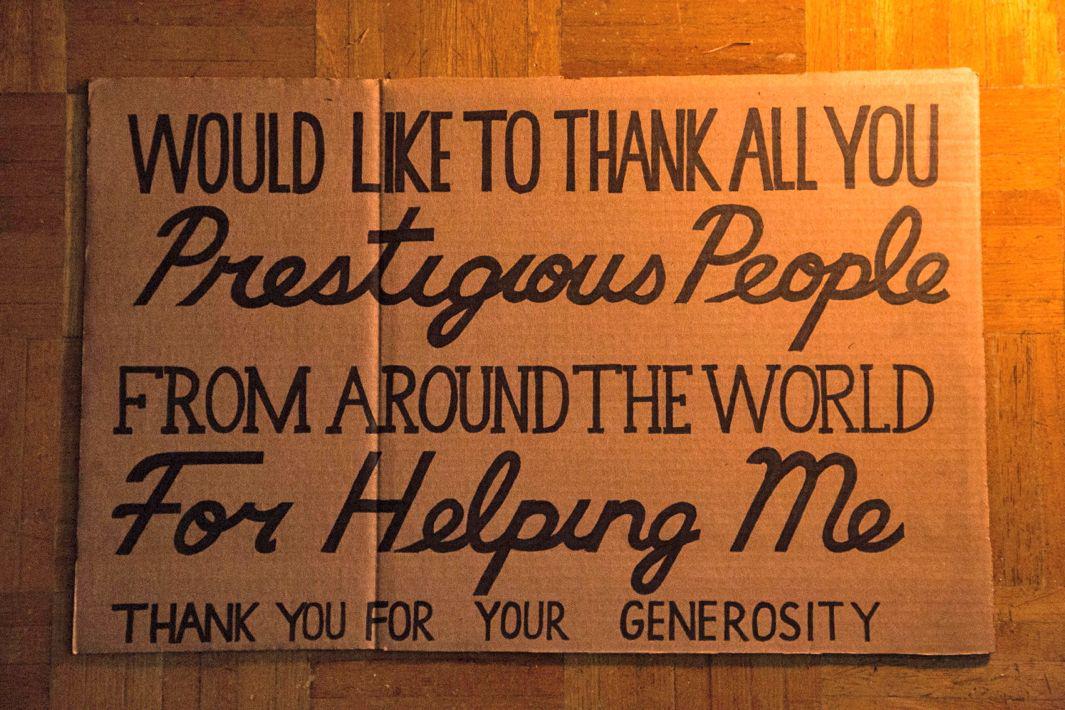
Courtesy of Ian Todd
Read more about Todd’s Urban Type Experiment on Tumblr.
